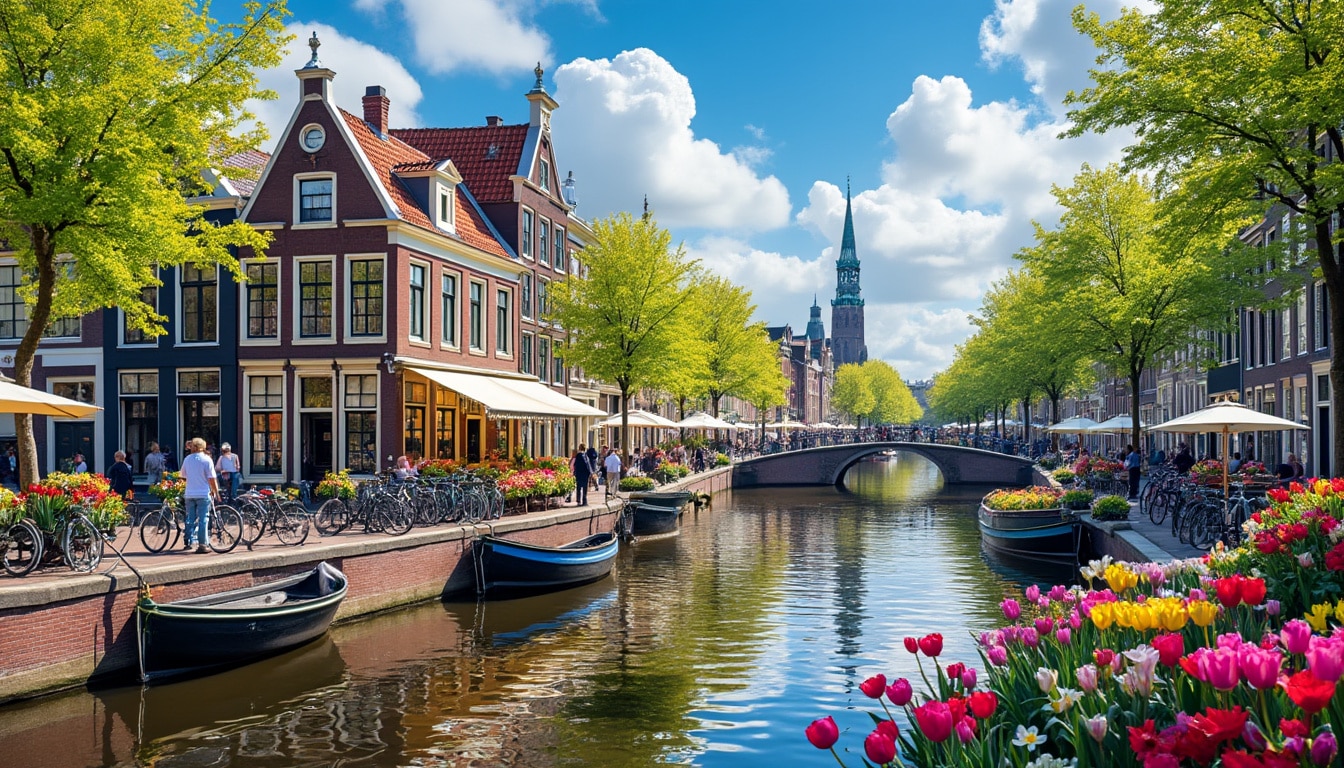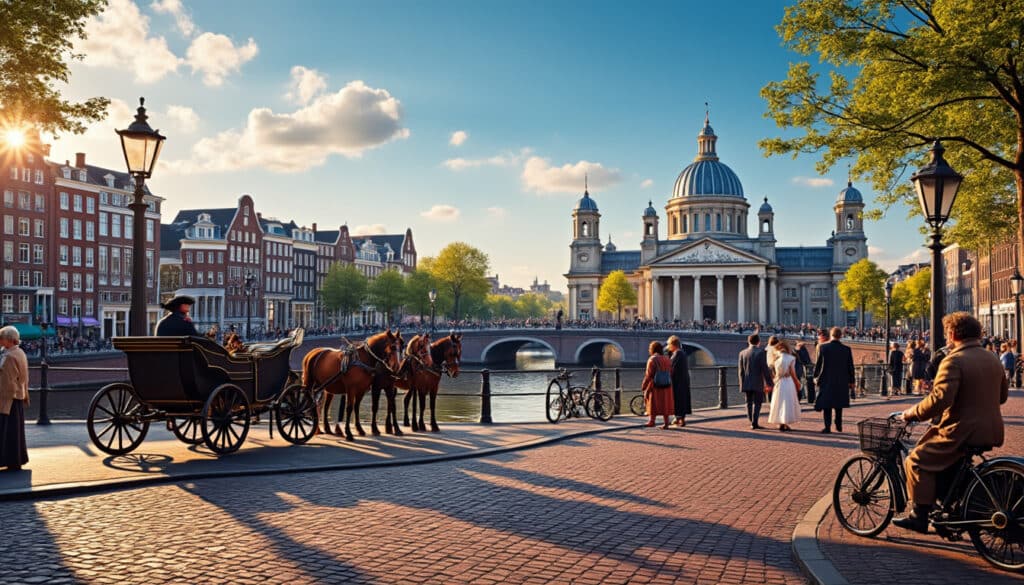A city of canals, history, culture, and innovation, Amsterdam has always been a significant player on the global stage. Known for its liberal ethos and iconic landmarks like the Van Gogh Museum and the Rijksmuseum, this Dutch capital has cultivated a reputation that resonates internationally. But beyond the clichés of windmills and tulips, Amsterdam’s identity is being continuously reshaped by its dynamic social, economic, and cultural fabric. Hailed as a city of tolerance and progressiveness, it now faces the challenge of sustaining its historical charm while adapting to modern demands. Through key strategies such as city branding and addressing multiculturalism, Amsterdam is navigating the complexities of globalization, competition, and local identity. Let’s delve deeper into the components that define Amsterdam’s personality today, from its historical legacies to contemporary cultural evolutions.
The Historical Foundations of Amsterdam’s Identity
Amsterdam’s reputation as a bustling hub of commerce and culture finds its roots deeply embedded in its historical narrative. Emerging as a significant trading power during the Dutch Golden Age of the 17th century, Amsterdam capitalized on its strategic location. The city became a melting pot for merchants from across the globe, fostering an environment ripe for cultural and economic exchanges.
During this period, known as the Golden Age, Amsterdam saw the rise of influential figures such as Johannes Vermeer and Rembrandt, whose works reflected the city’s prosperity and artistic innovation. The establishment of the Dutch East India Company turned Amsterdam into a pivotal economic powerhouse, facilitating trade routes across continents. This historical backdrop is crucial to understanding the city’s enduring spirit of commerce and creativity that remains a significant cultural and economic force today.
Moreover, Amsterdam’s intricate canal system, designed in the 17th century, not only served commercial purposes but also enhanced the city’s aesthetic appeal. This network of waterways has contributed to Amsterdam’s identity, attracting millions of tourists each year and securing its status as a UNESCO World Heritage site. These canals are not just a visual delight but an emblem of the city’s resilience and innovation—a sentiment that persists in its modern urban planning initiatives.
Alongside economic growth, Amsterdam’s stance on religious tolerance during the Reformation set the stage for its modern-day reputation as a liberal bastion. It welcomed persecuted populations, influencing the city’s demographic makeup and fostering an inclusive society. This historical openness laid the groundwork for the Netherlands’ current policies on multiculturalism and liberal attitudes towards social issues.
The 1960s marked another transformative era for Amsterdam, as the city embraced the counterculture movements. This involved a shift towards more progressive attitudes on rights related to gender, sexuality, and personal freedom—values that are now integral to the city’s brand. How Amsterdam responded to global influences during these periods and its ability to integrate such changes into its identity, continues to inform its strategies for growth and reputation management today.
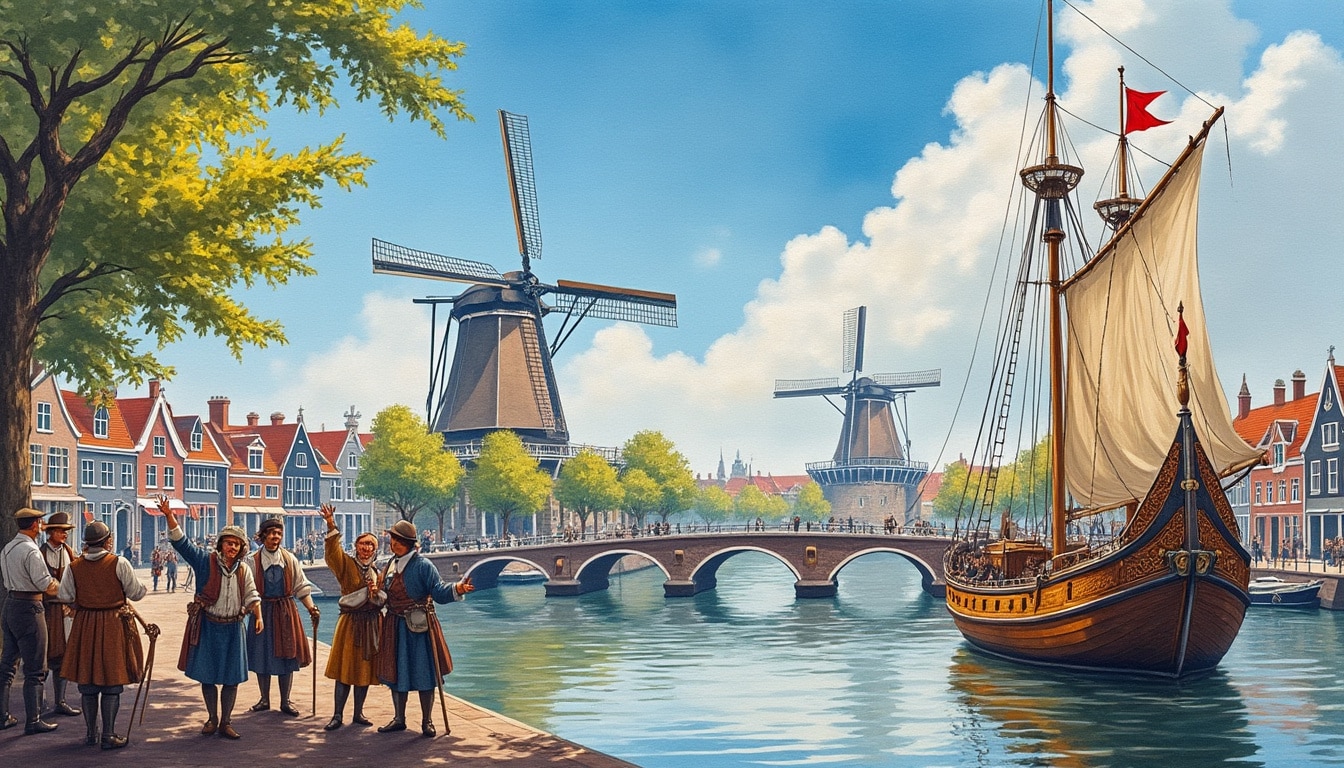
In essence, Amsterdam’s status as a historical and cultural hub has been molded by centuries of trade, tolerance, and transformation. This backdrop provides a rich tapestry for understanding the city’s present identity and reputation—a dance between honoring its storied past and embracing an evolving future.
The Role of Branding in Shaping Amsterdam’s Image
With the advent of globalization, cities like Amsterdam have turned to branding strategies as essential tools for maintaining their competitive edge internationally. The “I Amsterdam” campaign, launched in 2004, exemplifies this approach by encapsulating the city’s diverse offerings under a single, coherent identity. The idea behind this successful branding effort was to foster a unified image that residents, businesses, and tourists could all embrace.
The “I Amsterdam” campaign has become an iconic example of effective city branding. It taps into the essence of Amsterdam by promoting its core values of commerce, creativity, and innovation. The slogan lays claim to an identity that is not just static but participatory, where residents and visitors alike can see themselves as part of the city’s ongoing narrative.
City branding aims to create connections and foster a sense of belonging among various stakeholders. The logo, prominently displayed in key tourist areas and woven into marketing materials distributed globally, has become a symbol of Amsterdam’s open spirit. Such visibility has proven instrumental in asserting Amsterdam’s identity amid fierce competition from other European cities.
Another core component of this branding strategy was addressing Amsterdam’s historical misrepresentations. The city’s reputation for its Red Light District and liberal drug policies sometimes overshadow its rich cultural and intellectual contributions. By highlighting assets like the Heineken Experience, the A’DAM Tower, and cultural events such as the Amsterdam Fashion Week, the campaign paints a fuller picture of what this vibrant city has to offer.
Moreover, branding efforts also support the city’s tourism and economic goals by attracting investments and fostering business relationships. The “I Amsterdam” initiative not only seeks to boost tourism but also to position the city as an appealing destination for business meetings and corporate events. This multifaceted approach to city branding facilitates a sustainable model for economic growth that benefits both local residents and the international community.
Overall, branding is an ongoing process of shaping perceptions. The “I Amsterdam” campaign successfully unified diverse narratives into a single brand identity that resonates with multiple audiences, thus reinforcing the city’s position as a top global city while maintaining its unique charm and spirit.
Strategies for Effective City Branding
The strategies underpinning Amsterdam’s branding efforts include clear communication, coherent messaging, and the strategic use of visual cues. These elements work together to ensure that the brand image is consistently presented across various platforms and media. This uniformity is crucial in establishing a robust, recognizable identity that resonates both locally and internationally.
- ✨ Clear Messaging: Ensures that the brand values of commerce, creativity, and innovation are clearly communicated in all promotional materials.
- 🌍 Global Appeal: Uses Amsterdam’s historical and modern achievements to appeal to international audiences and encourage global partnerships.
- 🏢 Infrastructural Integration: Incorporates brand identity into the cityscape with sculptures and installations that tourists can interact with.
| Aspect | Strategy | Outcome |
|---|---|---|
| Culture | Highlight cultural offerings | Increased cultural tourism |
| Commerce | Promote business-friendly environment | Enhanced business investments |
| Community | Engage residents with city initiatives | Strengthened local identity |
Through strategic branding, Amsterdam has been very successful in not just preserving its historical identity but also adapting to contemporary challenges. The city’s reputation as a progressive, open, and dynamic place is a testament to its effective brand management strategies.
Amsterdam’s Identity in Multiculturalism and Tolerance
Amsterdam’s identity has long been associated with multiculturalism and a liberal ethos, pivotal aspects of the city’s global reputation. As Russell Shorto aptly puts it, Amsterdam is often perceived as the “world’s most liberal city.” This perception finds roots in its history of welcoming diverse groups, offering refuge and opportunities to those affected by religious and political turmoil elsewhere.
Throughout the 20th century, Amsterdam’s policies on immigration and social integration have mirrored broader Dutch values of tolerance and inclusivity. However, these ideals have recently been tested by debates surrounding immigration and cultural diversity. Political proposals, such as the controversial “headrag tax” aimed at Islamic headscarves, have stirred discussions about the limits of tolerance and highlighted underlying tensions in Dutch society.
Moreover, the challenge of balancing multiculturalism with national identity has sparked ongoing debates within Amsterdam. While the city prides itself on being a hub for diversity, how to integrate various cultural identities into a cohesive Amsterdam identity poses complex questions. Such dialogues emphasize the need to continuously reassess and redefine what it means to be ‘Dutch’ in an increasingly global age.
Important facets of Amsterdam’s multicultural identity are the cultural institutions and events that celebrate this diversity. The Amsterdam Dance Event and food festivals showcase the multicultural vibrancy, while museums like the Royal Delft and Heineken Experience echo the city’s illustrious trading past. These initiatives demonstrate the city’s commitment to embracing diversity while also supporting economic and tourism goals.
Interestingly, while Amsterdam is at the forefront of embracing multiculturalism, it is also cautious about the challenges this brings. Efforts are in place to not only welcome immigrants but also to integrate them harmoniously into the city’s social fabric.
To further examine Amsterdam’s multicultural landscape, one can refer to the city’s educational programs and seminars, such as those facilitated by institutions like the Amsterdam Tourism & Convention Board. These programs focus on understanding cultural differences while promoting inclusivity, reflecting the city’s commitment to its multicultural ethos.
- 🕌 Historical Legacy: A history of religious tolerance influences current policies.
- 💼 Integration Programs: Offers resources for new immigrants to integrate into society.
- 🎨 Cultural Celebrations: Festivals that celebrate the diverse cultural tapestry of the city.
The challenges of multiculturalism and the promise it holds for enhancing Amsterdam’s identity are complex and deeply interconnected. As such, the city continually adapts its approaches to remain an inclusive, dynamic, and tolerant society.
Economic Forces and Urban Transformation
The city’s economic landscape and urban development have significantly contributed to shaping Amsterdam’s identity. The economic strategies underscore Amsterdam’s reputation as a vibrant hub of creativity and innovation, striving to maintain its stature amidst global competition. Equally important are the urban transformations that have aligned with these economic initiatives.
The city embodies the essence of the “spirit of commerce,” balancing both tradition and modernity. As a trading hub since the 17th century, Amsterdam has harnessed its historical strengths and utilized them to forge contemporary business environments. The presence of major corporations such as KLM Royal Dutch Airlines underscores Amsterdam’s relevance in global commerce.
In addition to being an economic powerhouse, Amsterdam prioritizes sustainability and livability. The city has invested heavily in green initiatives, urban planning, and infrastructure to ensure that development aligns with environmental goals. New residential areas and business districts utilize renewable energy sources, solidifying Amsterdam’s role as a pioneer in urban sustainability.
Critical to Amsterdam’s economic identity are its industries focused on culture, fashion, and technology. Events like Amsterdam Fashion Week and tech conventions reflect the city’s commitment to creativity and innovation. Additionally, diverse sectors such as green finance, digital media, and life sciences find fertile ground in Amsterdam’s progressive business climate.
Contrary to typical urban narratives, Amsterdam’s economic forces have not overtaken its cultural roots. Instead, they synergize to enhance the city’s distinctive blend of tradition and innovation. This synergy is evident in tourism, as cultural landmarks and contemporary business ventures are seamlessly integrated into tourism strategies.
- 📈 Economic Diversity: A broad sector base including technology, finance, and culture supports robust growth.
- 🏡 Residential Development: Focuses on sustainable and livable communities.
- 💡 Innovation Hubs: Establishes areas dedicated to tech and innovation in business.
| Sector | Focus | Initiatives |
|---|---|---|
| Culture | Tourism and Architecture | Preservation and modern exhibitions |
| Technology | Innovation and Startups | Support for tech incubators and startup ecosystems |
| Environment | Green Energy and Sustainability | Investment in renewable energy projects |
As Amsterdam approaches future economic endeavors, its strategies aim to balance growth with the preservation of cultural values that have long defined it as a unique urban metropolis.
Modern Challenges and Opportunities
As Amsterdam navigates through 2025, modern challenges and opportunities present both complexities and potential in maintaining its reputation and identity. The city’s adaptability serves as a testament to its resilience in confronting issues such as immigration, economic disparities, and environmental sustainability.
One of the pressing challenges is the influx of tourists, which although a boon for the economy, strains local resources and infrastructure. The balance between welcoming tourism and preserving the quality of life for residents is a nuanced dance that Amsterdam must choreograph meticulously. The city encourages responsible tourism, as seen in initiatives by the Amsterdam Tourism & Convention Board that promote lesser-known attractions and instill eco-friendly practices among visitors.
Moreover, Amsterdam’s approach to residential livability is marked by a commitment to sustainability. Urban planners have prioritized green spaces, cycling infrastructure, and energy-efficient buildings as integral elements of the city’s modern development strategy. The continued expansion of public transport networks further underscores Amsterdam’s drive towards sustainable urban living.
Technology and digitalization offer opportunities for Amsterdam to enhance its infrastructure and service delivery. From smart city solutions to innovative public services, the city’s investment in digital advancements reflects a forward-thinking approach to urban governance.
Another significant aspect is the promotion of arts and cultural programs, elevating Amsterdam’s stature as a global cultural epicenter. Events, exhibitions, and collaborations reflect an ongoing celebration of diversity and creativity, creating platforms for cultural discourse and engagement.
The implications of these developments are profound, influencing not only Amsterdam’s identity but its reputation and global standing. Embracing challenges with innovation and creativity allows Amsterdam to remain at the forefront of urban advancement, continuously redefining what it means to be a dynamic and inclusive city.
- 🌿 Sustainability Efforts: Smart city initiatives and green energy projects.
- 🎭 Cultural Promotion: Amplifies city’s cultural presence globally.
- 🚲 Transportation Development: Expands cycling and public transport infrastructure.
As Amsterdam continues to evolve, its strategies and policies are emblematic of its commitment to fostering an environment that is both innovative and inclusive. Whether through embracing multiculturalism or championing sustainable development, Amsterdam’s path forward is indicative of its historical resilience and adaptability.
Frequently Asked Questions (FAQ)
- Q: What is Amsterdam’s main cultural attraction?
A: Amsterdam is renowned for its cultural landmarks such as the Rijksmuseum and the Van Gogh Museum, which attract art and history enthusiasts worldwide.
- Q: How does Amsterdam handle its large tourist volume?
A: Through strategic tourism management, including initiatives for responsible tourism and eco-friendly practices, Amsterdam effectively manages its tourist influx.
- Q: What are Amsterdam’s recent urban development strategies?
A: The city focuses on sustainable development, enhancing green spaces, expanding public transport, and promoting energy-efficient infrastructures.
Amsterdam’s identity and reputation are a testament to a nuanced interplay of history, culture, and modern innovation. As it looks towards the future, the city remains committed to preserving its unique essence while embracing the possibilities of a global society.
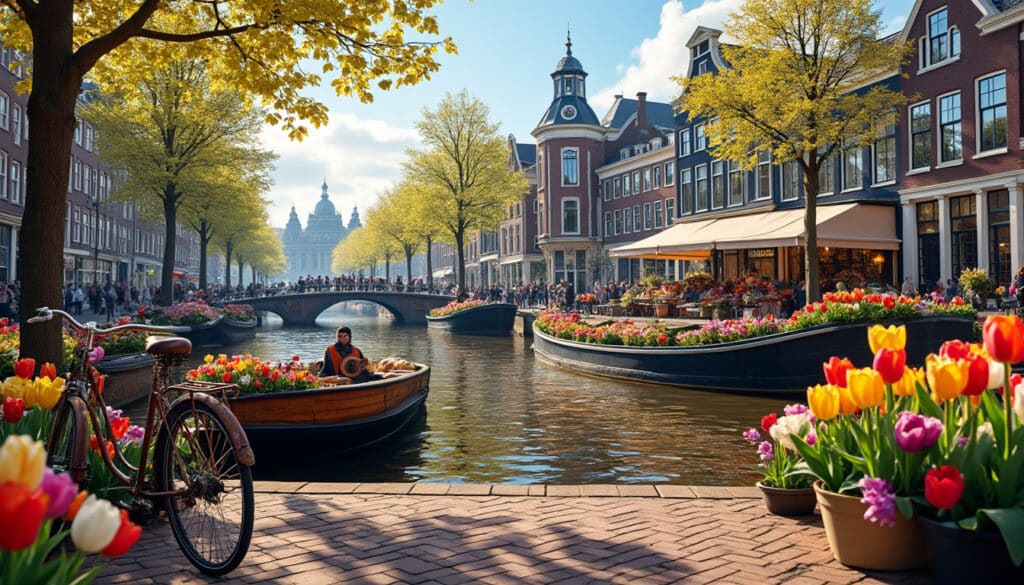
Fun Facts & Curiosities About Amsterdam
Amsterdam, the vibrant capital of the Netherlands, is a city that never ceases to amaze. Known for its serene canals, world-renowned art museums, and rich history, it’s no wonder that this ‘Venice of the North’ attracts over 20 million visitors…
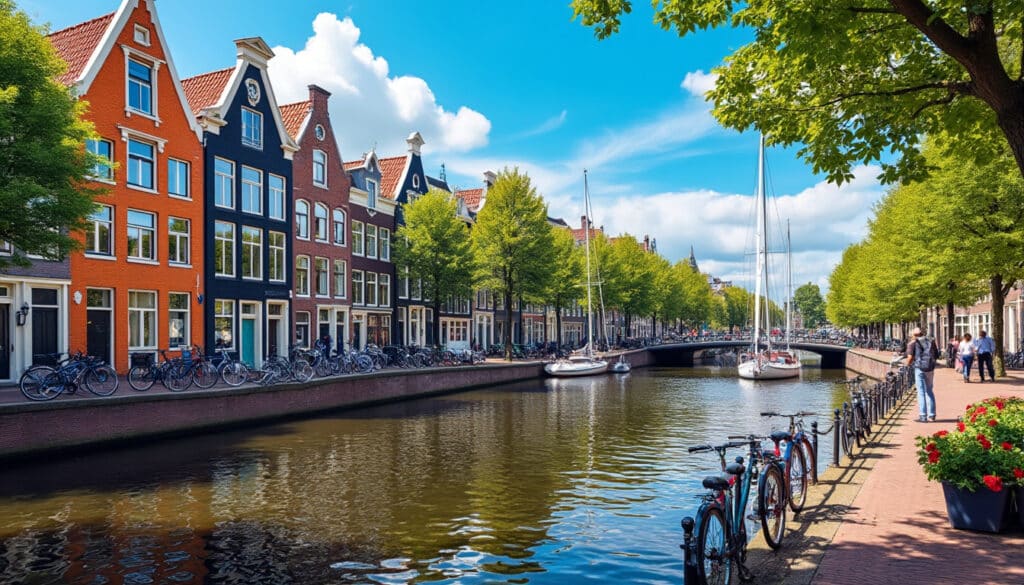
Architecture and urban features of Amsterdam
Amsterdam, a city renowned for its intricate network of canals and historical charm, is also a hub of architectural brilliance. From its iconic canal houses to modern marvels, the city’s architectural landscape offers a delightful exploration for design enthusiasts. As…
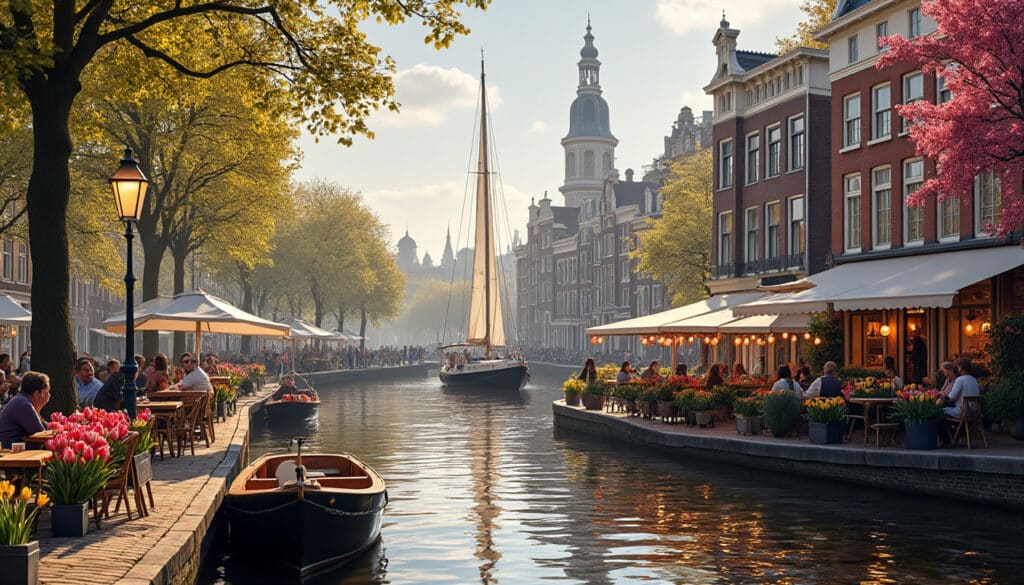
Amsterdam, the capital city of the Netherlands, offers an intriguing blend of historical charm and modern-day convenience. Known for its stunning architecture, cultural diversity, and vibrant neighborhoods, this city provides a unique experience for both residents and tourists. From biking…
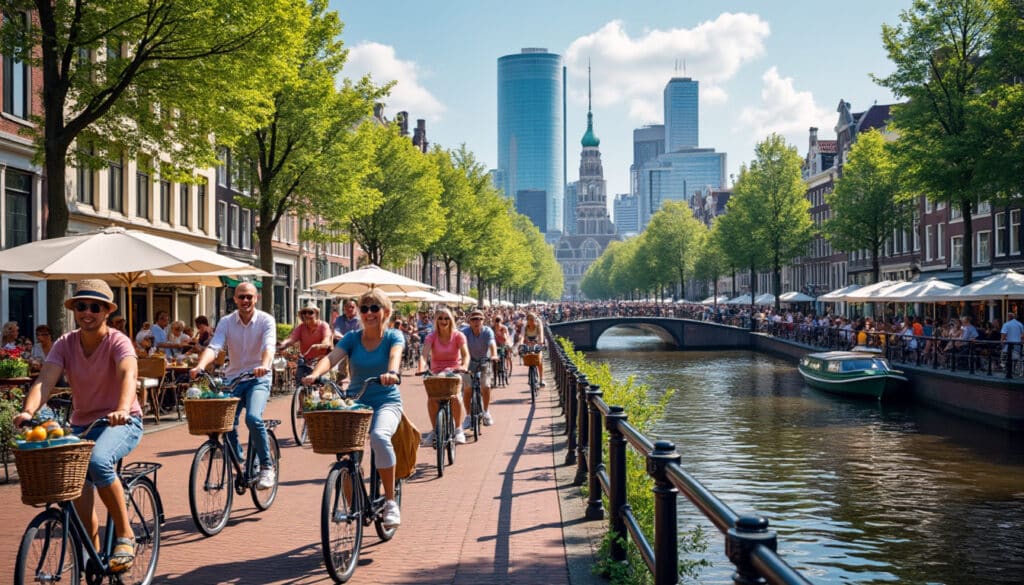
Demographics and geography of Amsterdam
Amsterdam, a city renowned for its intricate canal systems, historic landmarks, and vibrant culture, is a place that offers a captivating blend of the old and the new. Known formally as the capital of the Netherlands, it stands as a…
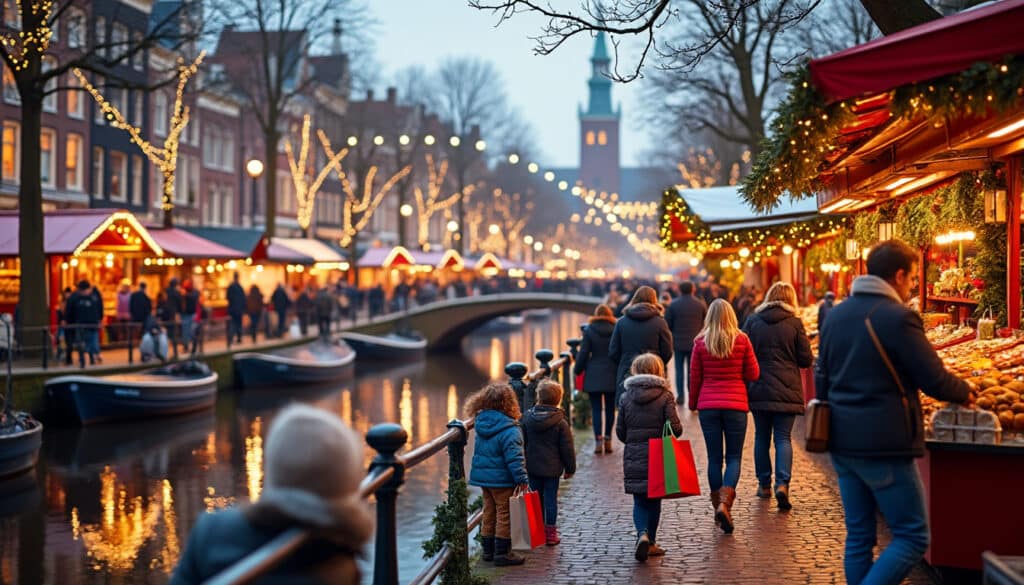
Holidays and celebrations in Amsterdam
Amsterdam, a city with a rich tapestry of history and modern culture, transforms itself through its myriad of festivals and celebrations throughout the year. As each season unfolds, the city reveals a unique character, inviting locals and visitors alike to…
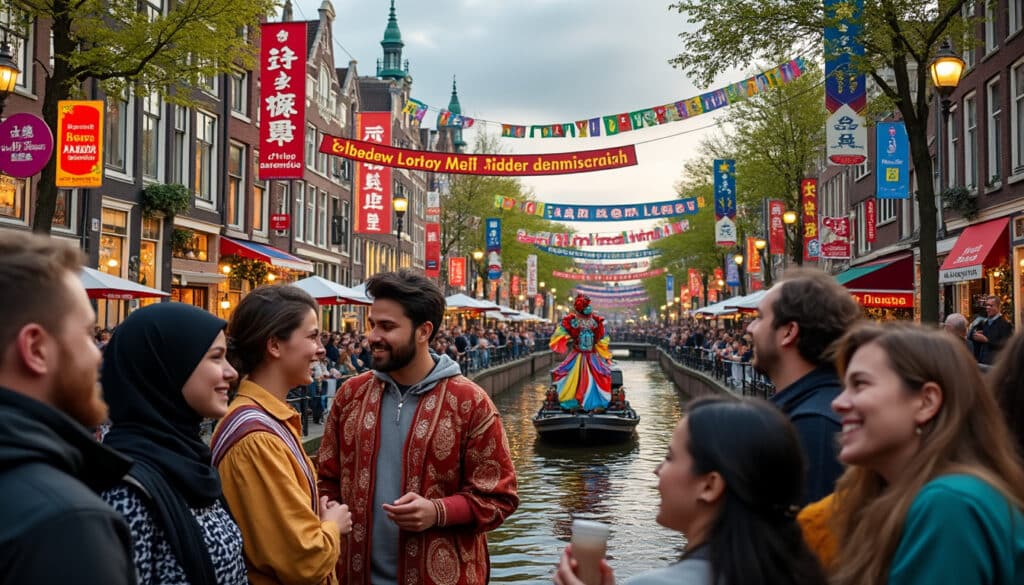
Language and spelling of Amsterdam
Amsterdam, with its historic canals, vibrant culture, and diverse demographics, thrives in its unique linguistic landscape. 🇳🇱 The official language is Dutch, a symbol of the city’s deep roots and rich heritage. Yet, this dynamic metropolis stands out for its…
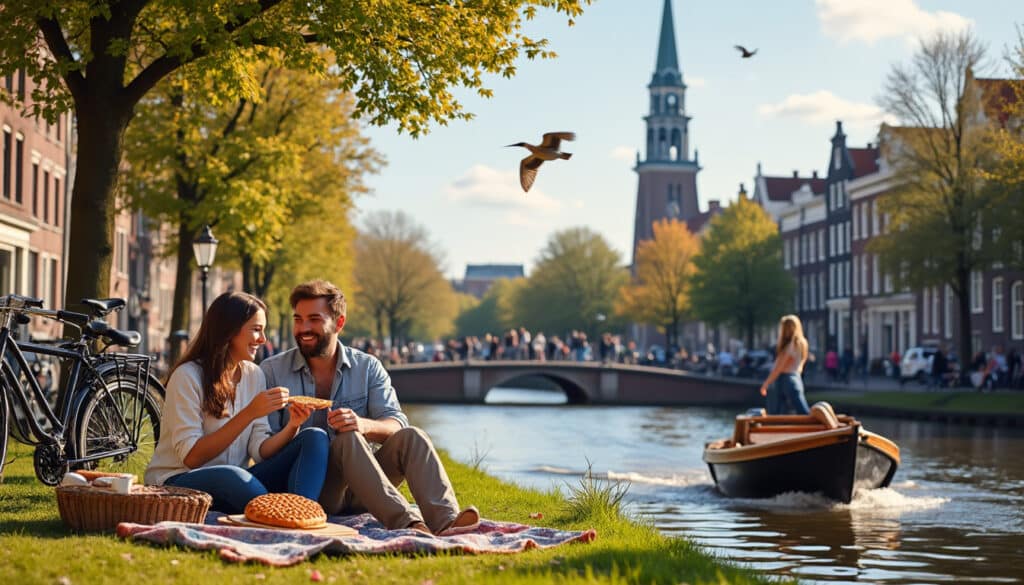
Local tips for tourists in Amsterdam
Amsterdam is a city brimming with historical charm, vibrant culture, and unique experiences that attract millions of visitors each year. While many tourists flock to the typical hotspots, there’s a wealth of hidden gems and local secrets waiting to be…
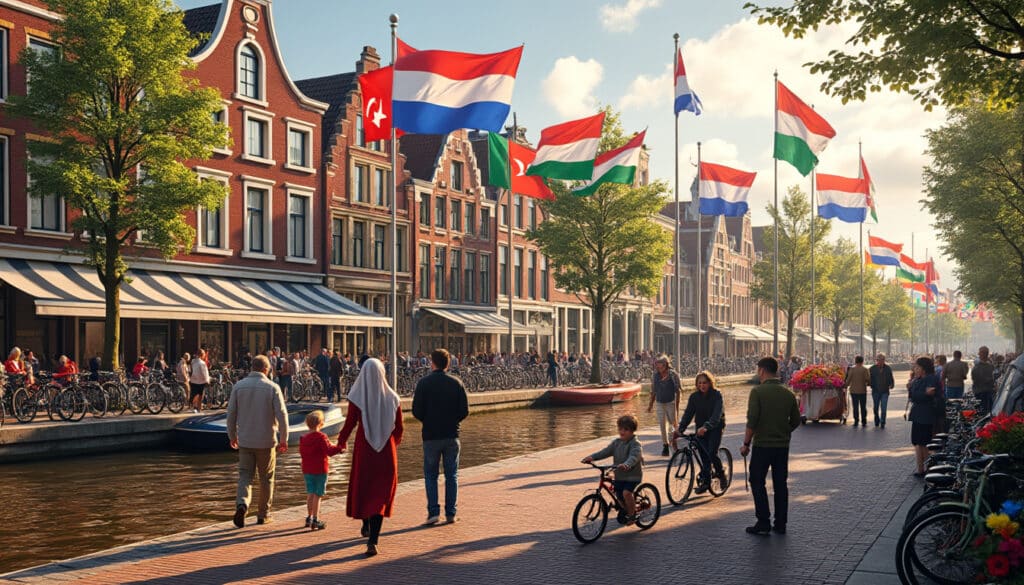
Names, flags, and identity of Amsterdam
The vibrant city of Amsterdam, with its rich tapestry of history and culture, showcases its identity in manifold ways. Beyond its iconic canals and architecture, the names and symbols, such as flags and coats of arms, deeply root its unique…
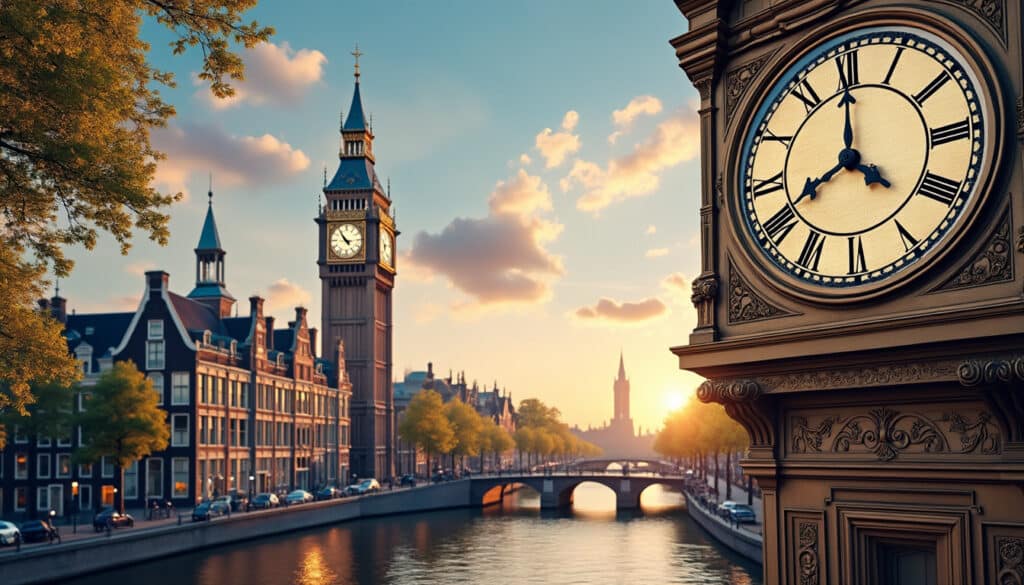
Time and time zone in Amsterdam
In a city as vibrant and multifaceted as Amsterdam, understanding the intricacies of time and time zone is crucial for both residents and visitors alike. From the precision of Amsterdam Clocks to the seasonal shifts in Daylight Saving Time, every…
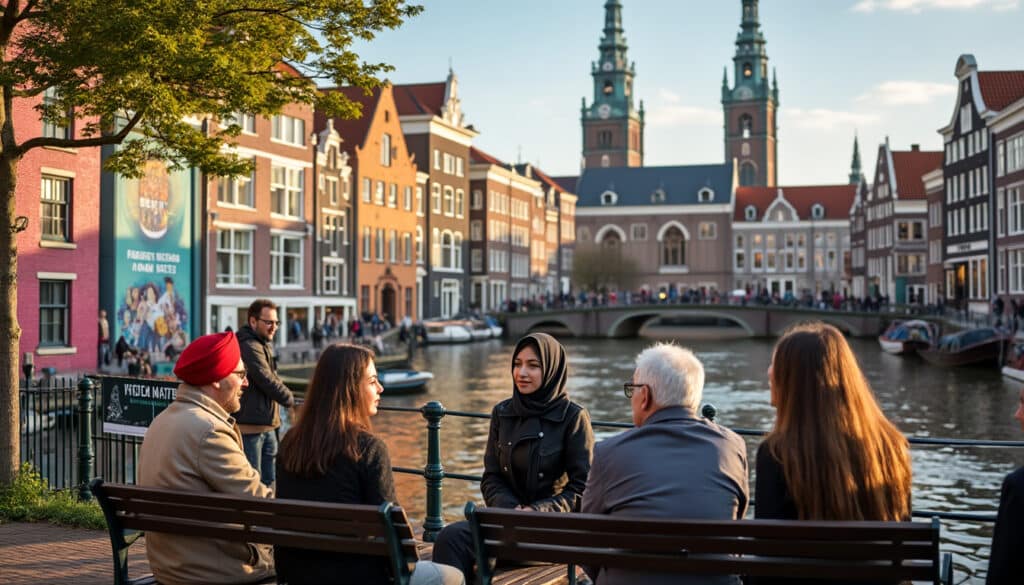
Unusual facts and social issues in Amsterdam
Amsterdam, often celebrated for its charming canals and vibrant culture, offers a blend of historical depth and modern vibrancy. Yet, beneath its picturesque exterior lies a tapestry of unusual facts and pressing social issues that often go unnoticed. From its…

What does Amsterdam look, smell, feel like?
Embark on an immersive journey through the sensory tapestry that is Amsterdam, a city where sight, smell, and touch blend to create an experience both unique and familiar. As bicycles gracefully weave through the cobblestone streets, the unforgiving wind dances…

